- News
- Reviews
- Bikes
- Components
- Bar tape & grips
- Bottom brackets
- Brake & gear cables
- Brake & STI levers
- Brake pads & spares
- Brakes
- Cassettes & freewheels
- Chains
- Chainsets & chainrings
- Derailleurs - front
- Derailleurs - rear
- Forks
- Gear levers & shifters
- Groupsets
- Handlebars & extensions
- Headsets
- Hubs
- Inner tubes
- Pedals
- Quick releases & skewers
- Saddles
- Seatposts
- Stems
- Wheels
- Tyres
- Tubeless valves
- Accessories
- Accessories - misc
- Computer mounts
- Bags
- Bar ends
- Bike bags & cases
- Bottle cages
- Bottles
- Cameras
- Car racks
- Child seats
- Computers
- Glasses
- GPS units
- Helmets
- Lights - front
- Lights - rear
- Lights - sets
- Locks
- Mirrors
- Mudguards
- Racks
- Pumps & CO2 inflators
- Puncture kits
- Reflectives
- Smart watches
- Stands and racks
- Trailers
- Clothing
- Health, fitness and nutrition
- Tools and workshop
- Miscellaneous
- Buyers Guides
- Features
- Forum
- Recommends
- Podcast
review
 2024 Van Rysel RCR Rival AXS Power Sensor - riding 1.jpg
2024 Van Rysel RCR Rival AXS Power Sensor - riding 1.jpg£4,500.00
VERDICT:
Textbook race bike with a great build for the money
Does everything well
Good spec for the money
Short wheelbase gives it a nimble nature
Not the most involving ride feel
Weight:
7,910g
Contact:
At road.cc every product is thoroughly tested for as long as it takes to get a proper insight into how well it works. Our reviewers are experienced cyclists that we trust to be objective. While we strive to ensure that opinions expressed are backed up by facts, reviews are by their nature an informed opinion, not a definitive verdict. We don't intentionally try to break anything (except locks) but we do try to look for weak points in any design. The overall score is not just an average of the other scores: it reflects both a product's function and value – with value determined by how a product compares with items of similar spec, quality, and price.
What the road.cc scores meanGood scores are more common than bad, because fortunately good products are more common than bad.
- Exceptional
- Excellent
- Very Good
- Good
- Quite good
- Average
- Not so good
- Poor
- Bad
- Appalling
The Van Rysel RCR Rival AXS Power Sensor is very well specced for the money and has all of the characteristics needed for a quality race bike. It balances comfort, stiffness and fun handling to create a package that makes for a very capable all-rounder too.
Check out our guide to the best road bikes for more options, from aero to endurance, from £250 to over £10,000…
Van Rysel RCR Rival AXS Power Sensor: Ride
In a nutshell the RCR is a responsive, fast all-round road bike that balances reasonably aggressive geometry with good frame stiffness and plenty of comfort. I wouldn't say it exactly it blew me away in any specific area, but for the amateur racer or fast club rider it delivers everything you need from a ride perspective.
I have a short 10-mile loop for my first ride on all new review bikes, so I can make sure everything is dialled-in position-wise. It's a mixture of busy A-road, a bit of urban traffic and back lanes, and even has a reasonably steep power climb and a technical descent for good measure.
It's a quick ride to get some initial impressions, highlighting what the bike does well and those it doesn't, giving me things to focus my attention on for longer rides. I normally come back with a mental list of things ready to put down on paper as early notes. For the RCR, though, nothing really sprung to mind. It didn't do anything exceptional to stand out, and it didn't put a foot wrong, so while riding along my mind wandered on to other things. That's not a criticism, but I think it's definitely a bike I'd buy with my head rather than with my heart.
Scraping in under 8kg the RCR isn't exactly a lightweight machine, but it is still light enough that it feels efficient on the flat and the climbs. Even with the deep-section wheels and an aero-optimised frame shape it's a lot of fun to ascend on thanks to good bottom bracket stiffness and a tightness to the whole frame and fork in general when climbing out of the saddle.
With a sub-metre wheelbase length (medium size and below) the RCR also feels nimble, offering quick direction changes, and it feels unflustered when descending at high speed. It feels really planted, too, which gives confidence on poor road surfaces.
The short head tube length allows a low-slung position, and thanks to the steepish head angle the RCR feels every much the race bike as you fly through the bends and accelerate out of the corners.
It's fun to ride, purposeful if you like. The only thing it's missing really, for me personally, is a little bit of rider involvement. It feels efficient, but a bit clinical if you know what I mean. For some of you that might be ideal, engineering perfection maybe, but I like my bikes to have a bit of character.
One thing I can't complain about is the finishing kit (full details in a bit) as this RCR is kitted out very well indeed and is probably what makes the Van Rysel such a good all-rounder. The spec list contains quality tyres mated to lowish weight but aero wheels and a very comfortable saddle, all of which helps give the RCR a relaxing and pleasant ride feel.
Van Rysel RCR Rival AXS Power Sensor: Frame & fork
The RCR is available in two frame options, this standard high-modulus carbon model or the Pro that uses a higher grade of carbon fibre. The Pro's frame focuses on stiffness and low weight, while the standard RCR is more of a compromise to include durability. A painted size medium RCR frame is claimed to be 830g, whereas the same size Pro is 790g. The RCR fork is 380g painted.
Van Rysel says the RCR has been designed and tested by aerodynamicists and it shares many frame tweaks that match others in the market, like the dropped seatstays and the cutout for the rear tyre on the seat tube.
All of the tubes flow into each other smoothly, and with internal cable/hose routing and seatpost clamp it's a very clean looking frameset. I think it's a good-looking bike, and the overall quality looks to be finished to a high standard. You also get a five-year warranty on the frame and fork.
As it's a race bike you won't be finding any mounting points other than those for a couple of bottle cages in the standard positions. Tyre clearance is good for a race bike, too, at 33mm wide.
The RCR is available in six sizes, from XXS to XL, with top tube lengths ranging from 516mm to 591mm.
The medium I've been riding has a top tube length of 556mm, with stack and reach figures of 546mm and 388mm respectively. The head tube length is 147mm, and sits at a 73-degree angle, while the seat tube is slightly steeper at 73.5 degrees. The wheelbase is 986mm, with 410mm chainstays.
Van Rysel RCR Rival AXS Power Sensor: Groupset
There are a few models in the RCR line-up, but ours, as the name suggests, has a full SRAM Rival wireless electronic groupset and Quarq power meter.
We gave the Rival groupset a full review when it was launched back in 2021 and overall were very impressed. It's a 12-speed system, and while not quite as refined as the recently updated Force and Red groupsets, it does offer precise and quick shifting, along with powerful braking from its hydraulic setup.
Ratio-wise SRAM does things a bit different to the other big groupset makers, offering a smaller large chainring (if that makes sense!) and going for a 10-tooth sprocket on the cassette so you don't lose that high-end gearing.
The chainset fitted here is a 48/35T, with a 10-46T cassette, and it's a setup that works well for me. Running a 48/35T as opposed to Shimano's smallest 105 chainset of 50/34T means I can stay in the larger chainring for longer and keep my pedalling cadence feeling more efficient.
Both the front and rear mechs are wireless for a completely clean setup, each with its own battery so you can switch them if one runs low. It does make the mechs a little larger than Shimano's Di2 units, but it's a setup I prefer.
The 160mm rotors front and rear give ample stopping power, and I have found that SRAM's hydraulic systems have got better in terms of modulation over the years.
The Quarq power meter is a welcome addition to the build, especially if you take your riding or race performance seriously. It's a single-sided system with measurement being taken from the left-hand crank, so not ideal if your output isn't anywhere near 50-50 for your left and right legs.
SRAM says that the battery will last for 400 hours and as it's a lithium AAA it's easy for you to change yourself.
Van Rysel RCR Rival AXS Power Sensor: Finishing kit
For the cockpit Van Rysel has specced some quality Deda components. The Superbox EVO stem is designed to ferry the brake hoses into the frame via the top of the head tube and down through the frame and fork. It's a reasonably clean look, although not as neat as some.
The handlebar is the Superzero RS which is full carbon fibre with a wing-shaped top section for aerodynamics. It offers plenty of comfortable hand positions and is stiff enough for hard out-of-the-saddle efforts.
The seatpost is Van Rysel's own aero carbon design to match the frame, and on top is a Fizik Antares saddle, one of my favourite long-nosed shapes.
Van Rysel RCR Rival AXS Power Sensor: Wheels & tyres
The Zipp 303s wheels have a 45mm-deep rim and a decent weight. When we reviewed a set back in 2020 they tipped our scales at 1,550g.
Matt's thoughts on them were that they offer great lateral stiffness and are unaffected by crosswinds, and I'd agree with him. This means they suit the RCR's all-rounder attitude, as even though the rims are relatively deep you don't need to reserve them for calm, dry days.
They're designed to take on lightweight off-road duties too, so there shouldn't be any issues with durability either.
Van Rysel has specced Michelin's Power Cup tyres in a 28mm width. I'm a fan of Michelin's latest road tyres, finding them to offer good grip, plenty of road feel and decent longevity.
The tyres and wheels can be run tubeless, too, so you can go down that route should you wish.
Van Rysel RCR Rival AXS Power Sensor: Value
When we originally received the RCR it had an RRP of £4,500, although that has been changed to £4,200, which nudges it ahead of most of the competition on value.
Canyon's Ultimate CF SL 7 Di2 Aero, for example, comes with a Shimano 105 Di2 groupset (on a par with Rival), power meter and deep-section DT Swiss ARC 1600 wheels, for £4,399. (I recently tested the range-topping CFR mode.)
Earlier this year I described the Scott Addict RC 30 as having a brilliant frameset in terms of stiffness and ride quality, but screaming out for some better wheels. It also has a Rival AXS groupset and a carbon fibre cockpit, but a set of aluminium rimmed Syncros wheels for its £4,399 price tag.
Looking at Giant's latest line-up, the TCR Advanced 0 AXS comes with the same groupset as the RCR, but without the power meter and also has 33mm tyre clearance. It also has 36mm-deep carbon wheels, and is priced at £3,799. I reviewed the lower-spec rim-braked version of the TCR Advanced 2 last year and was very impressed with the way it rode.
I think the TCR and the Scott have slightly better ride qualities overall than the RCR, so if it was my money that would probably be the route I'd be going down. If you wanted to add a power meter to the Giant, the power crank arm and replacement spider will set you back an extra £230, which makes the TCR look a bargain. I can't really comment on the Canyon as the only model I've ridden recently is that top-end CFR, which isn't a fair comparison.
Van Rysel also offers the RCR in a SRAM Force build for £5,000, and the Pro version with the higher spec carbon fibre with Shimano Ultegra Di2 and a power meter for £5,500 (currently reduced to £4,999).
Van Rysel RCR Rival AXS Power Sensor: Conclusion
On the whole, the RCR is a good choice, ticking all of the boxes required for a race bike. The frameset is well made and the ride quality is impressive for such a stiff bike, plus it is competitively priced.
Verdict
Textbook race bike with a great build for the money
road.cc test report
Make and model: Van Rysel RCR Rival AXS Power Sensor
Size tested: Medium, 556mm
About the bike
List the components used to build up the bike.
Groupset: SRAM Rival AXS
Chainset Ratios: 48/35T
Cassette Ratios: 10-36T
Rotors: 160mm
Handlebar: Deda Superzero RS
Stem: Deda Superbox EVO
Seatpost: Van Rysel Carbon Fibre
Saddle: Fizik Antares
Wheelset: Zipp 303s
Tyres: Michelin Power Cup 28mm
Tell us what the bike is for and who it's aimed at. What do the manufacturers say about it? How does that compare to your own feelings about the bike?
Van Rysel says, "This is our most accomplished bike to date. It has been designed and tested by aerodynamicists and offers the perfect balance between pure performance and pleasure. RCR or RCR PRO: the choice is yours"
It's a quick bike that is designed for performance but is also comfortable and easy to ride.
Where does this model sit in the range? Tell us briefly about the cheaper options and the more expensive options
There is a SRAM Force model that's slightly more expensive, plus an RCR Pro model with Shimano Ultegra Di2, which is the range topper.
Frame and fork
Overall rating for frame and fork
8/10
Tell us about the build quality and finish of the frame and fork?
The build quality looks to be good throughout, and the bikes come with a five-year warranty.
Tell us about the materials used in the frame and fork?
The frame and fork are made from high modulus carbon fibre.
Tell us about the geometry of the frame and fork?
The geometry is typically race, with a relatively low front end and a short wheelbase keeping it nimble.
How was the bike in terms of height and reach? How did it compare to other bikes of the same stated size?
The stack and reach figures are fairly typical for a bike of this type and size.
Riding the bike
Was the bike comfortable to ride? Tell us how you felt about the ride quality.
Ride quality is good overall. It's a stiff bike, but the frameset does a good job of taming road buzz.
Did the bike feel stiff in the right places? Did any part of the bike feel too stiff or too flexible?
The frame has a good level of stiffness throughout, with no signs of any flex around the bottom bracket area.
How did the bike transfer power? Did it feel efficient?
Sitting just below 8kg the RCR isn't the lightest bike for the money, but it never feels like it is held back. When climbing or powering along on the flats it feels efficient thanks to the aero wheels and ratios of the SRAM groupset.
Was there any toe-clip overlap with the front wheel? If so was it a problem?
No.
How would you describe the steering? Was it lively neutral or unresponsive? Neutral.
Tell us some more about the handling. How did the bike feel overall? Did it do particular things well or badly?
I found the handling well balanced. Direct, but not too quick for it to feel twitchy.
Which components had the most effect (good or bad) on the bike's comfort? would you recommend any changes?
I'm a fan of the Antares saddle shape and got on very well with it, plus the multiple hand positions of the aero handlebar are all comfortable to use.
Which components had the most effect (good or bad) on the bike's stiffness? would you recommend any changes?
The Zipp wheels have very good lateral stiffness.
Which components had the most effect (good or bad) on the bike's efficiency? would you recommend any changes?
I like the ratios of SRAM's AXS groupsets as I can spend much longer in the larger chainring than I do with the compact chainset range of a Shimano offering.
Rate the bike for efficiency of power transfer:
8/10
Rate the bike for acceleration:
8/10
Rate the bike for sprinting:
8/10
Rate the bike for high speed stability:
8/10
Rate the bike for cruising speed stability:
8/10
Rate the bike for low speed stability:
7/10
Rate the bike for flat cornering:
8/10
Rate the bike for cornering on descents:
8/10
Rate the bike for climbing:
8/10
The drivetrain
Rate the drivetrain for performance:
8/10
Rate the drivetrain for durability:
8/10
Rate the drivetrain for weight:
7/10
Tell us some more about the drivetrain. Anything you particularly did or didn't like? Any components which didn't work well together?
The Rival AXS groupset offers good all-round performance and I'm a fan of the ratios.
Wheels and tyres
Rate the wheels for performance:
8/10
Rate the wheels for durability:
8/10
Rate the wheels for weight:
7/10
Rate the wheels for comfort:
8/10
Tell us some more about the wheels.Did they work well in the conditions you encountered? Would you change the wheels? If so what for?
Durable wheels with great lateral stiffness, at a decent weight too considering the deep-section rims.
Rate the tyres for performance:
8/10
Rate the tyres for durability:
8/10
Rate the tyres for weight:
7/10
Rate the tyres for comfort:
8/10
Tell us some more about the tyres. Did they work well in the conditions you encountered? Would you change the tyres? If so what for?
A good balance of grip, durability and rolling resistance means you have impressive tyres straight out of the box with no need to upgrade.
Controls
Rate the controls for performance:
8/10
Rate the controls for durability:
8/10
Rate the controls for weight:
7/10
Rate the controls for comfort:
8/10
Tell us some more about the controls. Any particularly good or bad components? How would the controls work for larger or smaller riders?
High level kit from a range of brands that adds to the overall ride experience.
Your summary
Did you enjoy riding the bike? On the whole, yes.
Would you consider buying the bike? Possibly, but I do think others have a ride quality that suits my style better.
Would you recommend the bike to a friend? Yes
How does the price compare to that of similar bikes in the market, including ones recently tested on road.cc?
It's competitively priced, as highlighted by the comparisons in the review to Canyon's and Scott's offerings, but the Giant does look to be a better bargain.
Rate the bike overall for performance:
8/10
Rate the bike overall for value:
5/10
Use this box to explain your overall score
While the RCR does everything very well, and is very much leaning towards an 8 overall, there is just something lacking in terms of the ride that, for me, keeps it to a solid 'good' at 7; it's competitively priced, but not exceptional.
About the tester
Age: 44
I usually ride: This month's test bike My best bike is: B'Twin Ultra CF draped in the latest bling test components
I've been riding for: Over 20 years I ride: Every day I would class myself as: Expert
I regularly do the following types of riding: time trialling, commuting, club rides, sportives, fixed/singlespeed,
Since writing his first bike review for road.cc back in early 2009 senior product reviewer Stu has tested more than a thousand pieces of kit, and hundreds of bikes.
With an HND in mechanical engineering and previous roles as a CNC programmer/machinist, draughtsman and development engineer (working in new product design) Stu understands what it takes to bring a product to market. A mix of that knowledge combined with his love of road and gravel cycling puts him in the ideal position to put the latest kit through its paces.
He first made the switch to road cycling in 1999, primarily for fitness, but it didn’t take long for his competitive side to take over which led to around ten years as a time triallist and some pretty decent results. These days though riding is more about escapism, keeping the weight off and just enjoying the fact that he gets to ride the latest technology as part of his day job.
Latest Comments
- imajez 5 hours 22 min ago
- looks like someone has fallen for the steel is real markerting BS. I only care how a bike rides, not what it is made of. I had a lovely steel...
- lonpfrb 6 hours 42 min ago
That argument is ignorance of the widespread height and width restrictions to be found on the many minor roads that were originally created for...
- David9694 8 hours 58 min ago
cyclists should be made to have number plates - Interesting police video here of the range of illegal number plates - we'd got, as the caption says...
- rookybiker 10 hours 11 min ago
The trailer seems to connect to both ends of the rear axle. Can it do tight corners without dragging the tyre sideways?
- froze 10 hours 14 min ago
Motorists have always been unkind to cyclists, but distracted driving is adding to the problem....
- Destroyer666 11 hours 7 min ago
Have you owned Bont shoes? In my experience even the widest Lake shoes have had a bizarre form of narrowing way too much in the toe area. But the...
- froze 11 hours 35 min ago
Not sure if this is possible, but this news letter goes out all over the world, and some places like Decathlon does not send stuff to America, in...
- Hirsute 12 hours 20 min ago
I'm confused as to why you'd need bib shorts indoors.
- Oldfatgit 12 hours 49 min ago
I'm sure you were being sarcastic... however ... Lewis Hamilton lives in Monaco. Yet another car driver that doesn't pay any tax
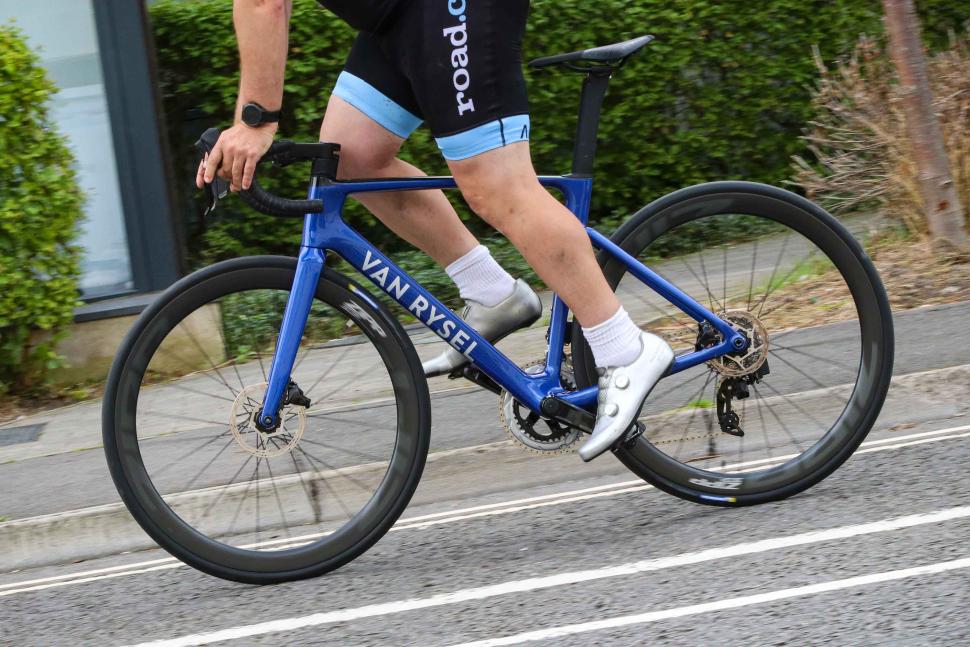


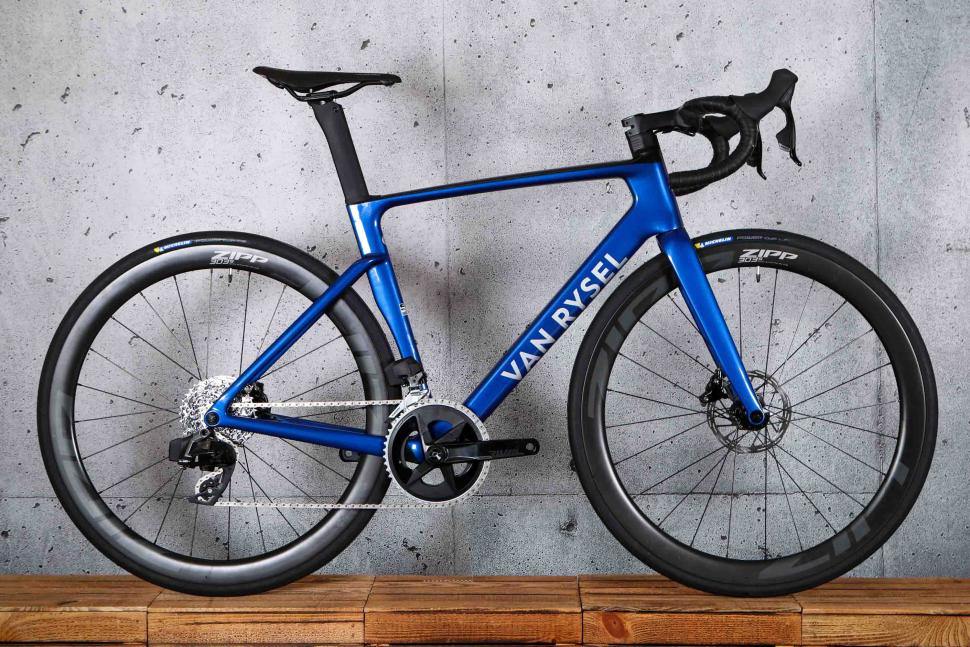
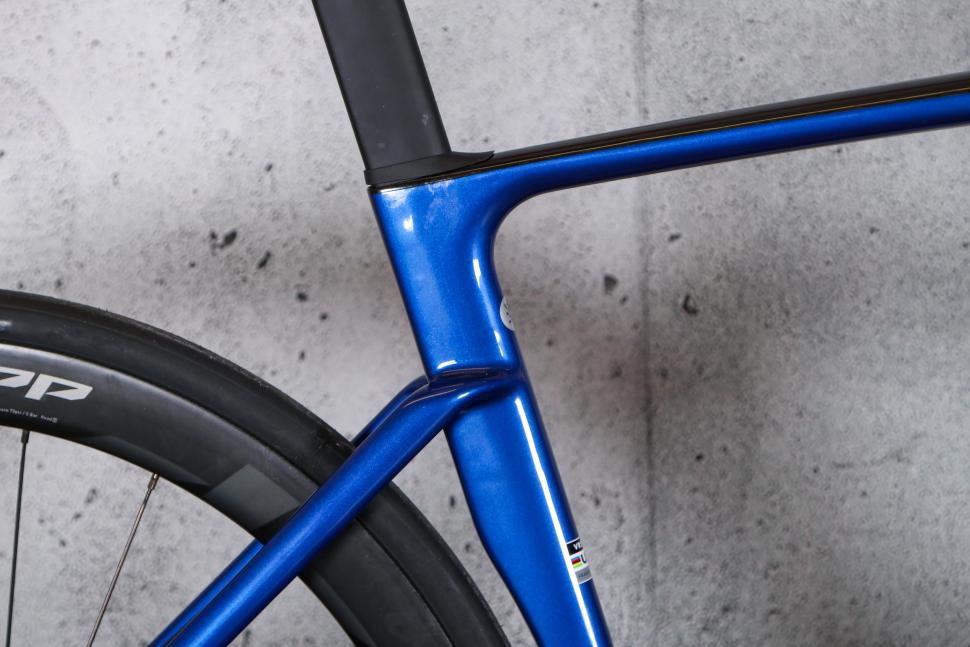
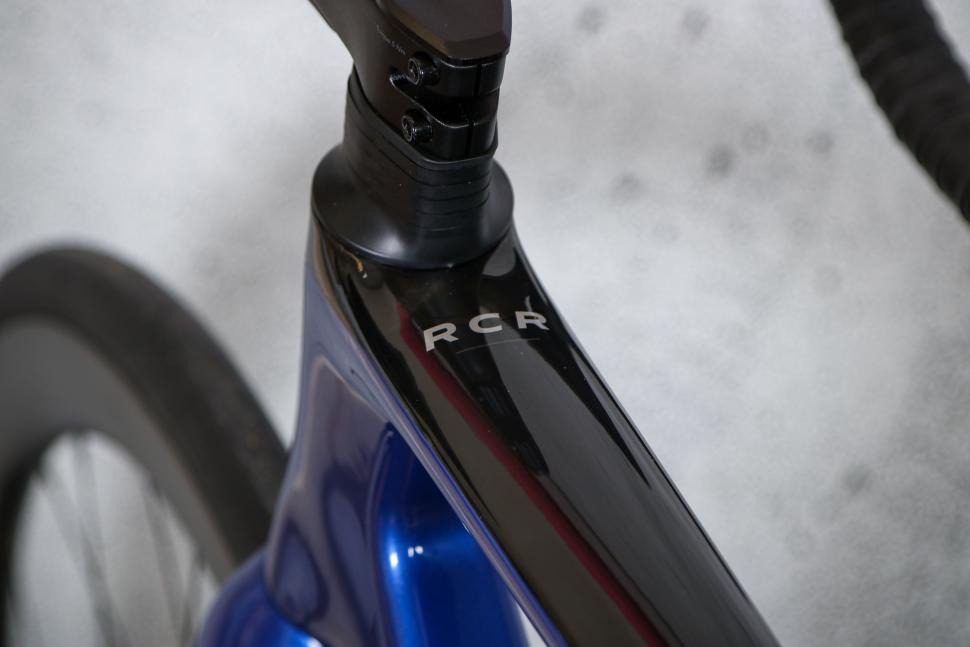








































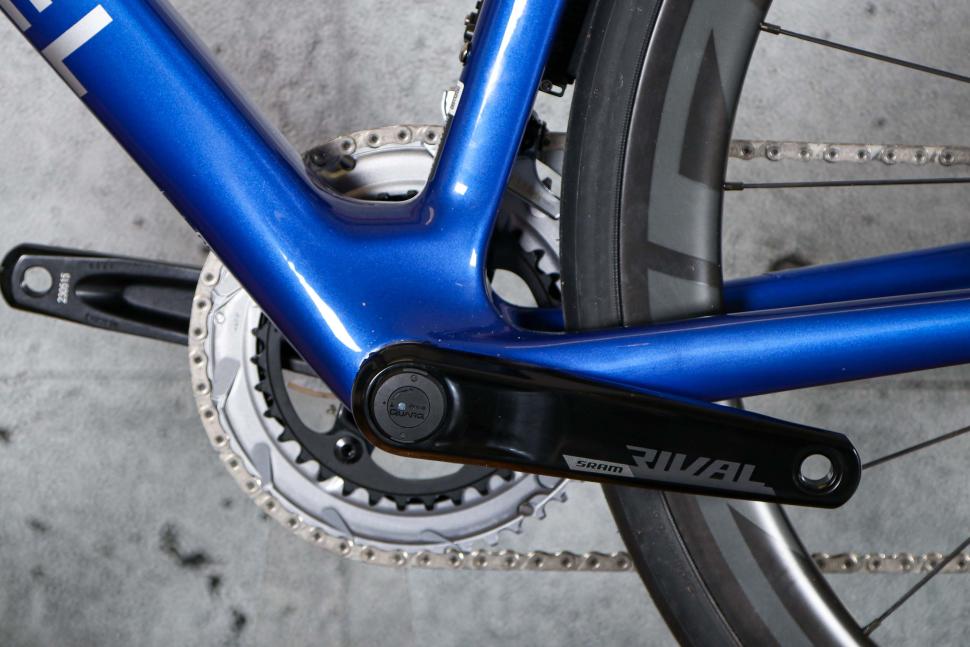

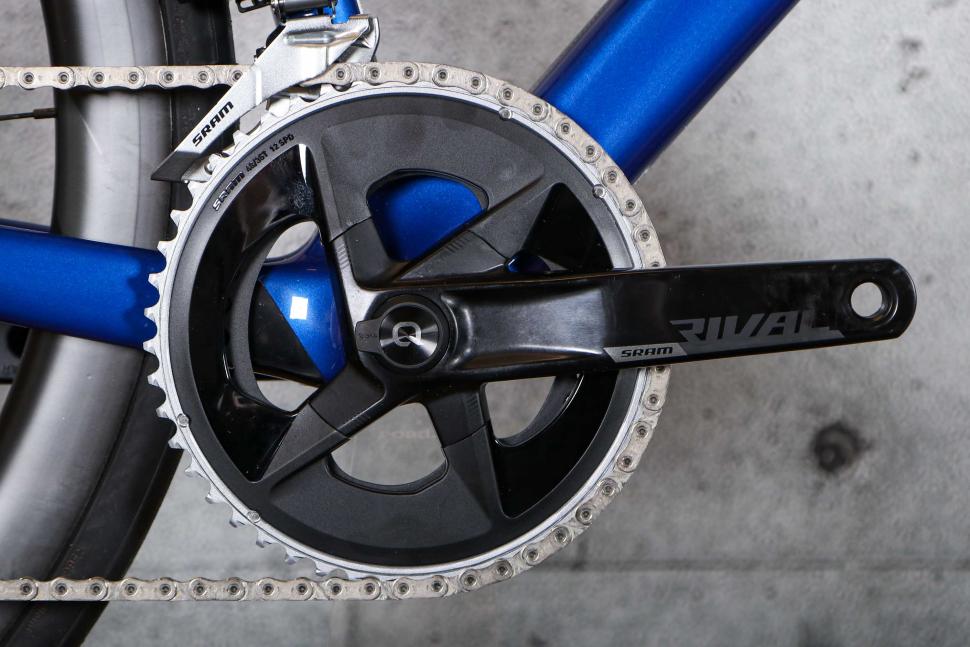
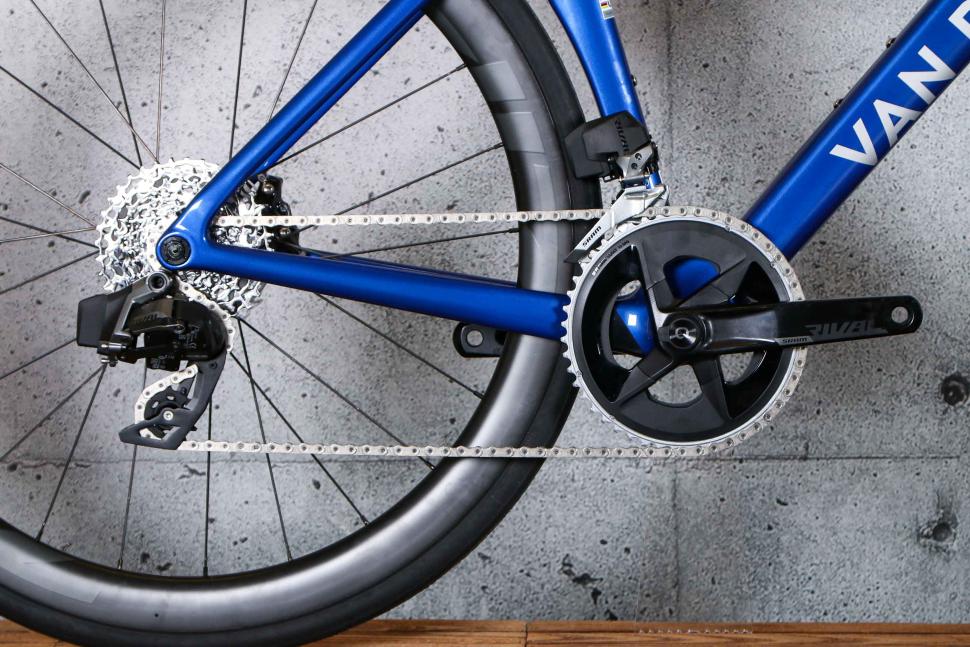

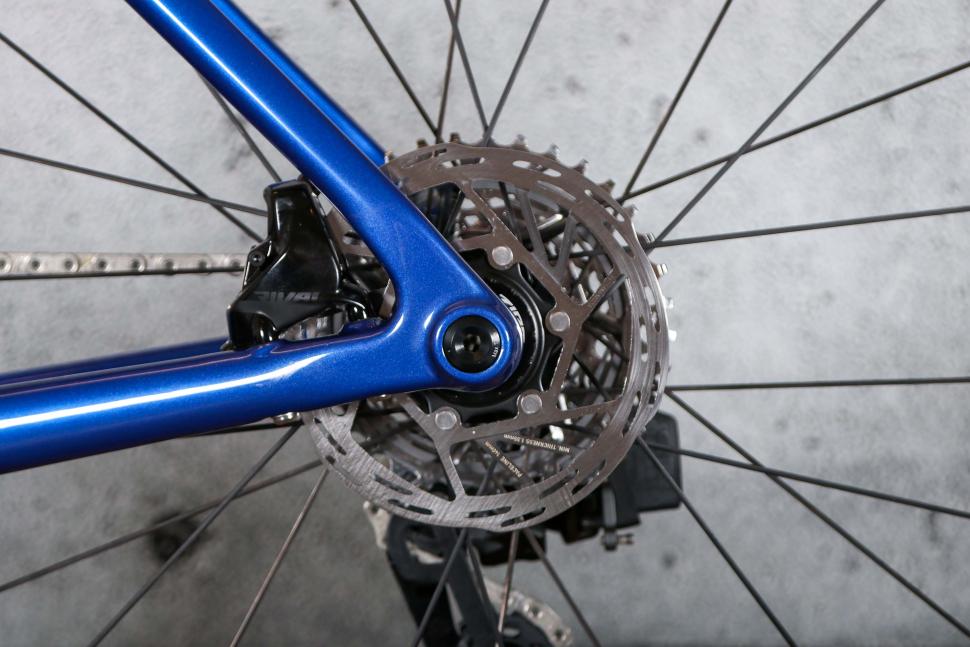
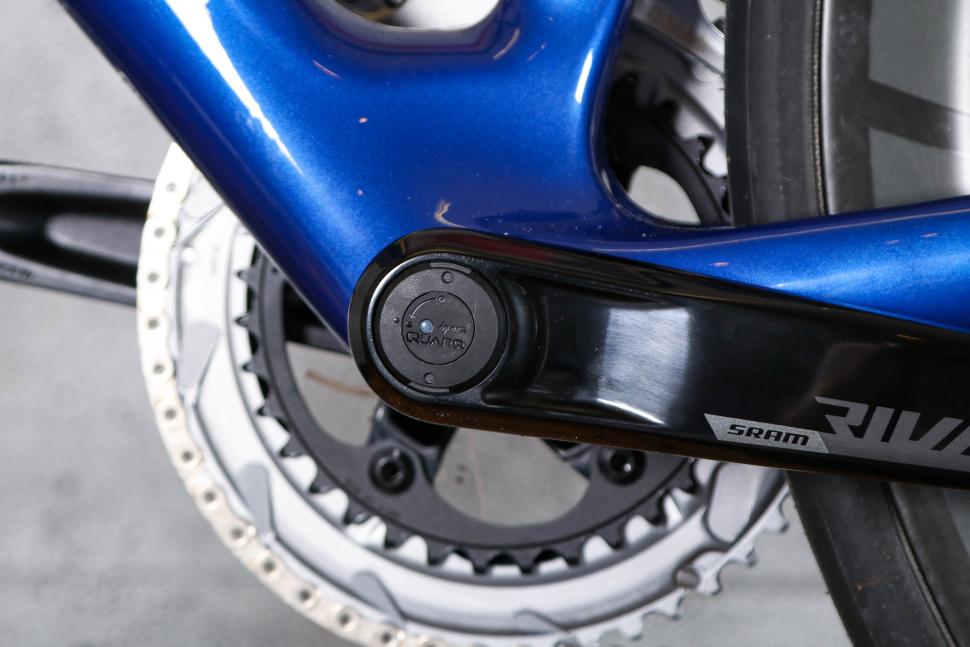
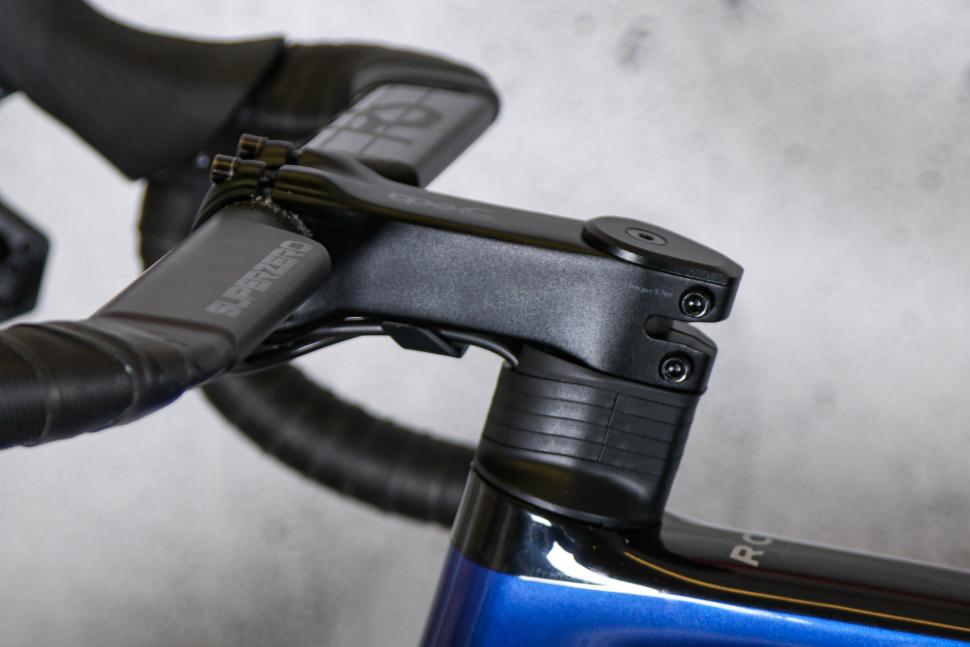
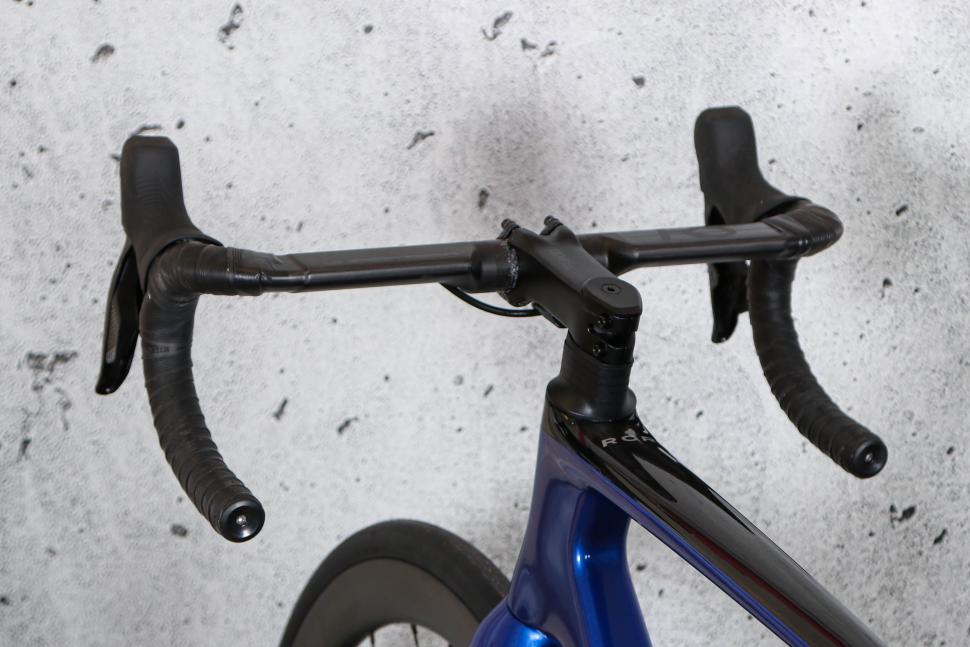

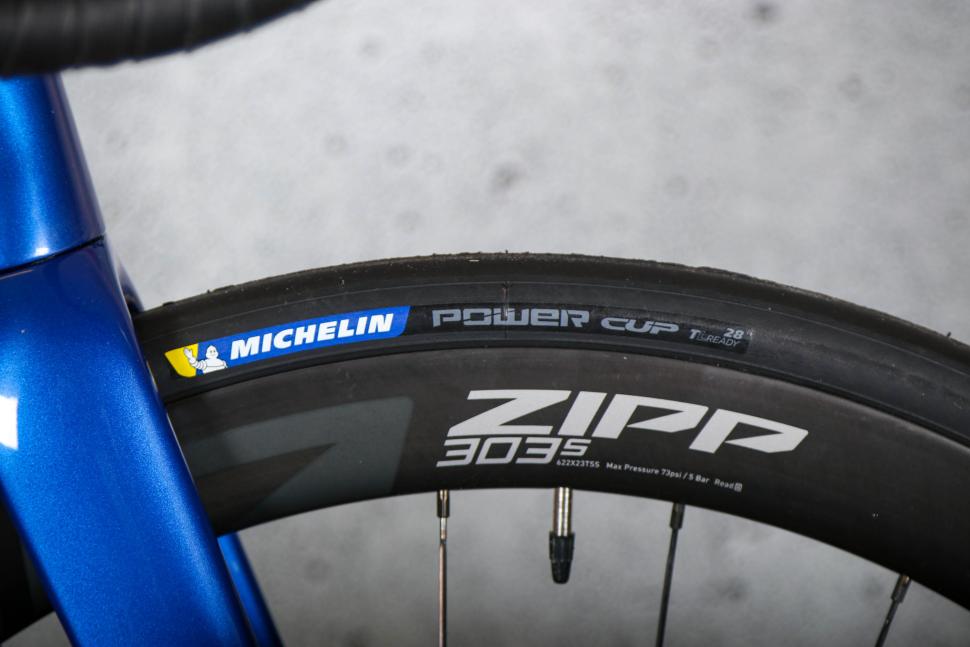
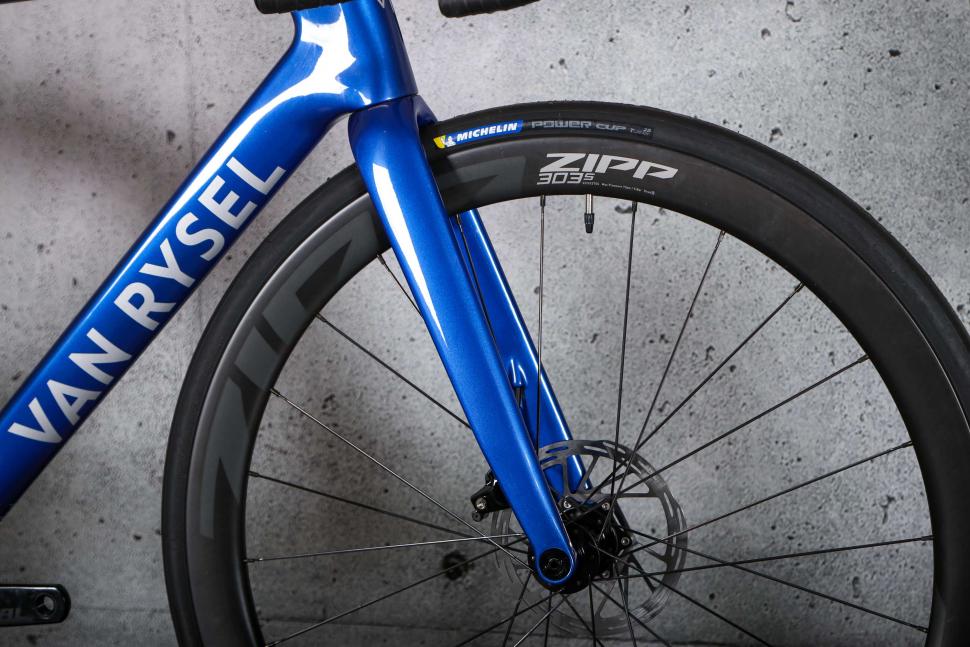




Add new comment
1 comments
Is it just me, or have your review markings got a bit harsher recently? This feels like one of a number of reviews which recently which have got a 7 but might previously have had an 8. (For what it's worth - and no comment on this bike - but I think that's a good thing as it allows more differentiation and 7 is still described as "good", but previously always felt it meant something was missing.)
But that may just be me!